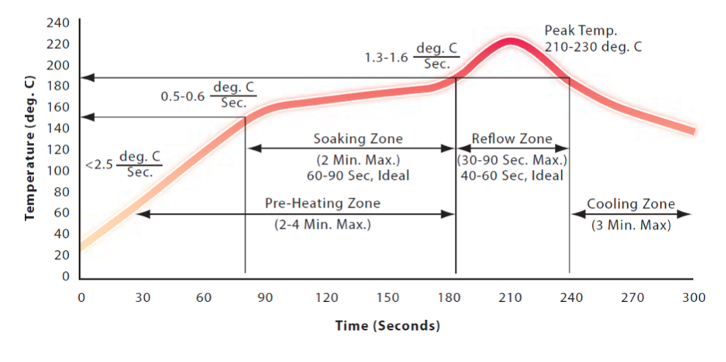To ensure Knowles Precision Devices (KPD) customers achieve optimal performance and are successful with our products, we have compiled a number of techniques to mitigate PCB variation and reduce the unwanted effects of microstrip technology (e.g. cross talk and radiation).
PCB Mounting and Improvements
PCB mounting is extremely important to functional design. KPD components use a metallization stack up that includes the following: an adhesion layer, sputter gold, electroless nickel, and immersion gold. This configuration allows the solder process to occur without dissolving the gold layer. KPD, like many other suppliers, has a recommended PCB pattern that serves as a starting point. However, the PCB thickness of the RF layer and the DK of the board material can increase or decrease the capacitance a device sees when it’s fully mounted on the board. Be aware that the PCB pattern may not be perfectly suited for your particular PCB thickness or material.
In addition, ensure proper grounding. A solid understanding of your board—frequency, DK of the board material, etc.—will give you a good idea of the spacing needed between ground vias. A lack of vias under the device can create unwanted modes in the ground area.
Another thing to consider is solder pattern and reflow profile. For KPD devices, it’s best practice to use a solder paste thickness of about 2 - 3 mil. This thickness ensures there’s enough coverage for a part to bond to the board properly and minimizes any solder flow onto the top circuit. At KPD, the recommended solder reflow profile has a maximum of 250 °C because devices with covers use a high temperature solder, leaving the reflow at roughly 290 °C. KPD doesn’t recommend that the reflow profile goes much higher than 265 °C.

DLI recommended solder reflow profile for filter attachment to PWB for typical SN63 solder.
In some cases, there may not be enough time or expertise for circuit board assembly companies to reliably place a recommended 2 - 3 mil solder thickness. To accommodate, KPD offers on-chip solder dams, using dry film solder mask material, to be placed on the top side of the circuit.
Isolation Improvements
KPD recommends using a grounded coplanar waveguide (CPW) versus a microstrip transmission line to improve isolation and reduce loss. When using a CPW, the electric field concentration is greater in the air, producing less loss. Further, the ground reference is on the same plane with a CPW; this arrangement improves isolation and creates less dispersion at higher frequencies.
In a resonant device (e.g. filter), establishing separate channels reduces cross talk. However, having separate channels isn’t always an option because of cost or footprint size limitations. Isolation can improve with physical distance—simply moving the filters away from each other.

(Left) Placing filters a distance of 100 mil apart results in about a 10 dB improvement in isolation; (Right) Adding a 5-sided cover reduces the effects of cross-talk and improves isolation by about 10 dB.
With limited board space, it can be useful to introduce an integrated cover. While it does incur additional manufacturing costs, KPD’s 5-sided cover can help to reduce cross talk when physical distancing isn’t possible, but isolation is still a priority.
For more information or advice on how to improve isolation and mounting on PCB and chip, contact us. We’re happy to make recommendations based on your unique needs and priorities.

